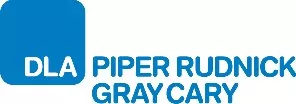Originally published August 15, 2005
By Steve Shimberg (Washington, D.C.) and Teresa Hitchcock (Sheffield, U.K.)
This summer the European Union is beginning to implement two broad new environmental law directives that have significant global impact on producers and distributors who operate internationally. The Waste Electrical and Electronic Equipment (WEEE) and Restriction of Hazardous Substances (RoHS) Directives regulate the handling of electrical and electronic equipment when it is discarded and the materials permitted to be used in such equipment.
Scope of WEEE Directive Is Wide
The WEEE Directive imposes obligations regarding the collection, re-use, recycling, and recovery of waste electrical and electronic equipment made by any "producer" (manufacturer or importer) of electrical and electronic equipment within the European Union. It will also affect producers operating outside of the European Union who sell products into an EU member state, particularly where they sell directly to the end user or when the importer is part of their organization. The scope of "electrical and electronic equipment" covered by the WEEE Directive is wide. It includes toys, leisure and sports equipment, household appliances, medical devices, computers, and most electrical and electronic tools.
Producer Bears Responsibility for Waste Disposal
Producers should note that the Directive requires EU member states to implement systems that ensure its requirements are met. Importantly, at the heart of WEEE is the idea that the producer has the ultimate responsibility for disposing of relevant waste. For instance, private owners must be able, free of charge, to take discarded equipment to collection facilities that are separate from more general recycling centers. The cost of implementing these new systems will not be borne by private owners or government aid. It will fall on producers. These requirements were supposed to take effect by August 13, 2005, though there may be a short delay in implementation in some member states. Producers will be obliged to mark appliances put on the market after August 13, 2005 (or in some cases the item’s packaging) with a special mark to discourage the disposal of the equipment along with ordinary household waste.
RoHS Directive Restricts Certain Hazardous Substances
The provisions of the RoHS Directive reinforce the WEEE Directive. The purpose of RoHS is to limit the potential of outdated electronic and electrical equipment to damage human health and harm the environment. RoHS thus restricts the use of specific hazardous substances (lead, mercury, cadmium, hexavalent chromium, PBBs, and PBDEs) in most electrical and electronic equipment covered by WEEE. The RoHS Directive will affect relevant equipment put on the market in the EU after July 1, 2006.
What Producers Should Consider
These are among the broad issues that you, as a producer, should study as you consider WEEE and RoHS compliance:
- Whether and to what extent the Directives apply to your products;
- How the Directives will affect product design;
- How to finance compliance requirements in different EU member states; and
- What implications the Directives have for the organization of your distribution networks.
This article is intended to provide information on recent legal developments. It should not be construed as legal advice or legal opinion on specific facts. Pursuant to applicable Rules of Professional Conduct, it may constitute advertising.

